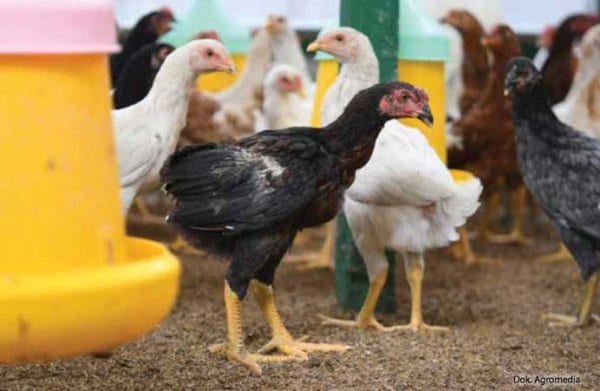
Ayam Joper is an abbreviation of the words Jowo and Super (Sudah Persilangan/already crossed). This chicken is the descendant of a cross between a native male chicken with a brown laying female with the aim of producing meat. Since 1990, the Joper chicken has attracted entrepreneurs and has begun to be accepted by the community as a substitute for native chicken.
“Ayam Joper emerged because market demand for native chicken meat increased. In this cross, the male elders of the native chickens and the female elders of laying hens are used because it is hoped that the offspring will have the characteristics of native chickens, namely body posture, feather color, claw length and color as well as the taste and texture of the meat like native chicken,” said Prof. Ir. Wihandoyo, M.S., Ph.D in the Obrolan Peternakan (OPERA) entitled Joper Chicken Cultivation and Business which was held online on Wednesday (16/9).
Wihandoyo added that the elders of laying hens produced a lot of eggs and did not incubate so that DOC could be produced at any time. Low feed consumption and faster growth rate than native chickens. The growth of native chickens that are allowed to roam and those that are maintained intensively shows a difference. At 16 weeks of age, roosters that are left roaming weigh 681 grams, while those that are intensively reared weigh 1086 grams.
“2003 was a dark year in the world of poultry because of the emergence of avian influenza with extraordinary effects, including the Joper chicken. The population of native chickens is only 30% and people did not dare to consume poultry products. People also did not want to raise chickens for fear of contracting the AI virus. The poultry industry, starting from the sector of breeding, hatching, laying eggs, broilers, feed and RPA, has stopped operating,” said Wihandoyo.
In 2005 until today, the world of poultry has begun to grow, including Joper’s chicken. The cultivation technique for Joper chickens is the same as for broilers, namely cages with stilt floors or litter (floor mats with husks), factory-made commercial feed, strict ND and Gumboro vaccinations, with a maintenance time of 60-70 days (800-1000 g / head).
“Before the Joper chicken was born, there was already a Joper type chicken called Crossing or Cressing, which is a cross between a male and a native female. The purpose of making Cressing chicken is for egg production, the eggs are small but high in quantity,” said Wihandoyo.
Chicken Crossing produces brown eggs but what the market demands is white eggs. Consumers cannot receive Crossing chicken eggs because they are considered purebred chicken eggs at the beginning of production.
Sri Hastuti, S.Pt., M.P, a Joper chicken entrepreneurs who was also the speaker at the event said that consumer demand for Joper’s chicken was high due to low levels of cholesterol and subcutaneous fat. In addition, these chickens are also easy for everyone to raise.
“Joper Chicken has several potentials, including the harvest age of only 60 days, while the common chicken reaches 120 days. The need for feed is around 2.4 kg for 1 kg of live weight while native chickens are used to feed 3.4 kg of feed per 1 kg of live weight,” said Sri Hastuti.
However, Sri Hastuti revealed, there are several main problems in poultry farming that must be considered, one of which is the trade system. Livestock products are perishable while the market demands good quality and continuous livestock products.
“To overcome this, it is better if the cultivation is done in groups so that the chick-in and harvest schedule can be arranged,” said Sri Hastuti.
In addition, Sri Hastuti added, breeders usually have problems with capital. The government has paid attention by providing funds but in fact the breeders who are being coached with grant capital are not successful. Farmers who use their own capital can actually succeed because they feel responsible. In addition, she also mentioned that the problem of disease and epidemics must be considered. Good sanitation can be started from the making of the animal housing.
